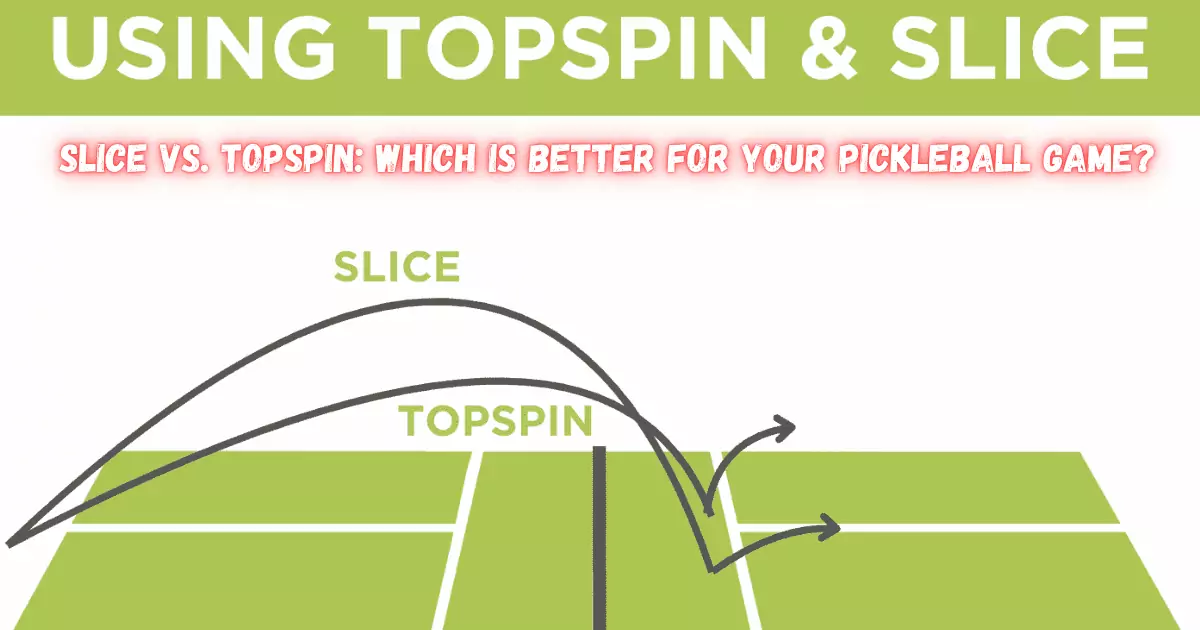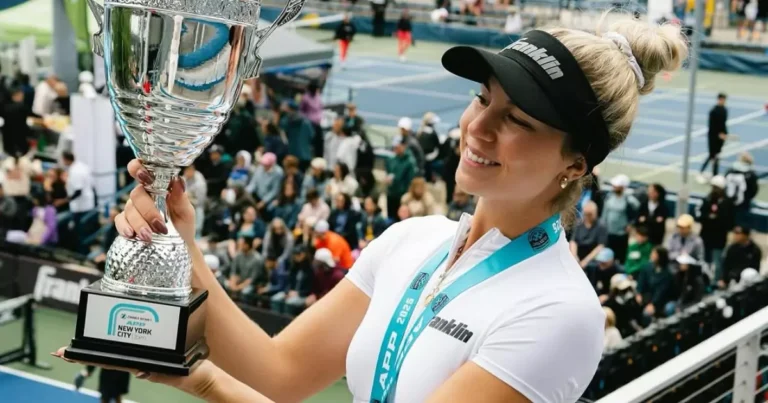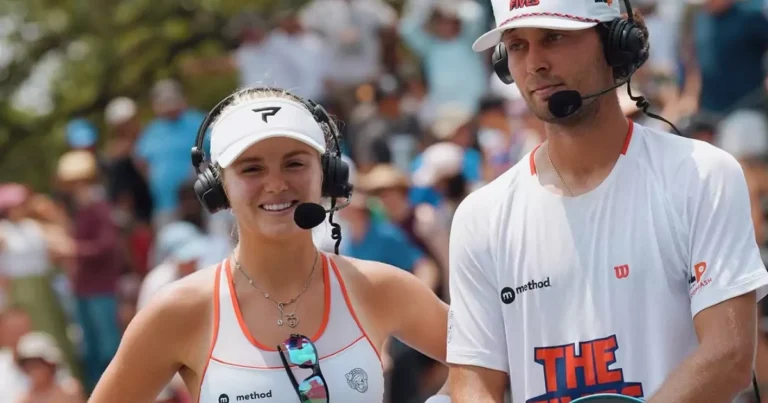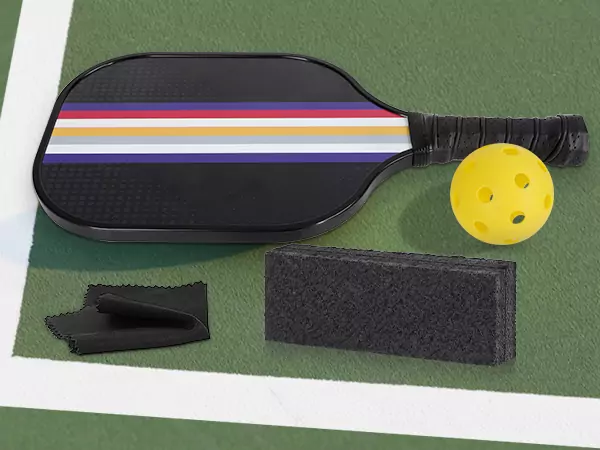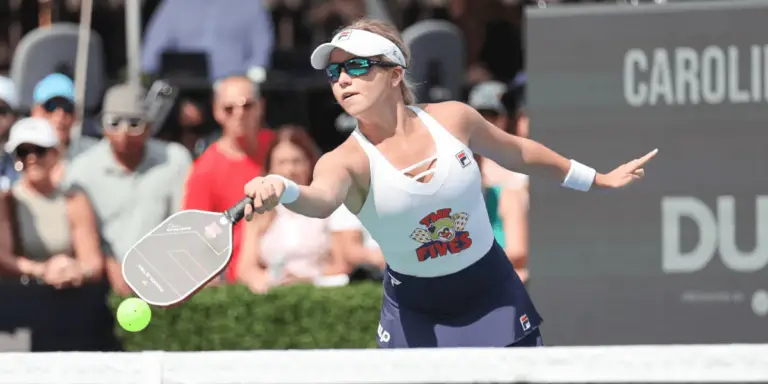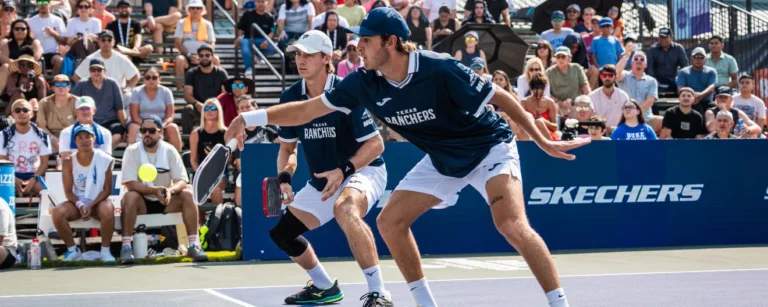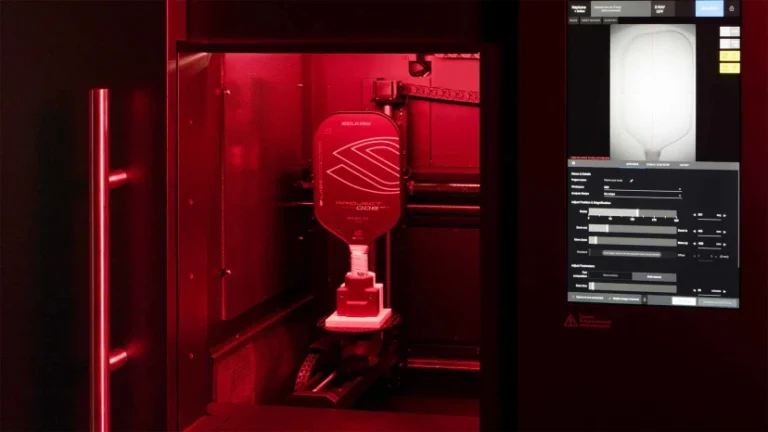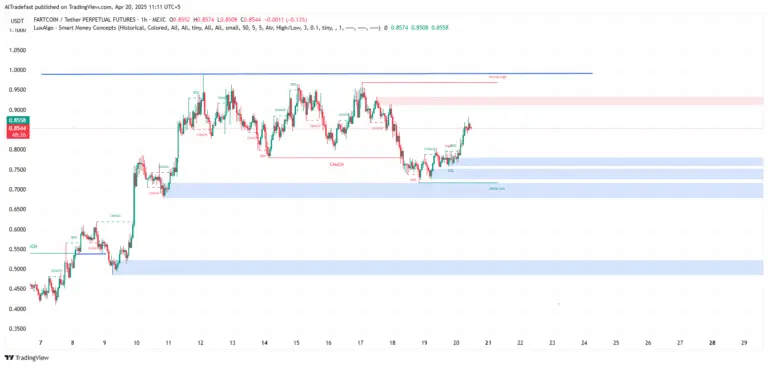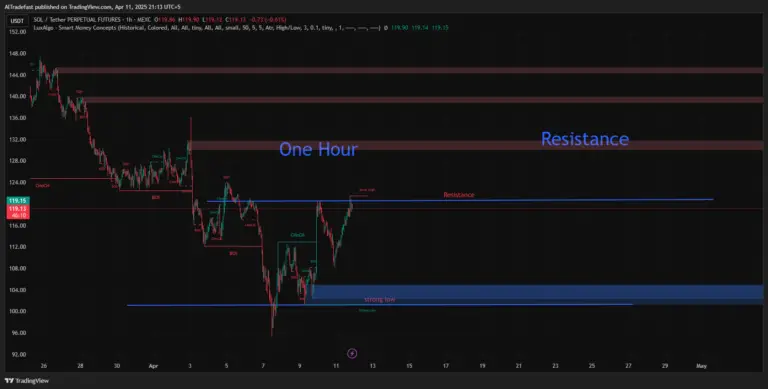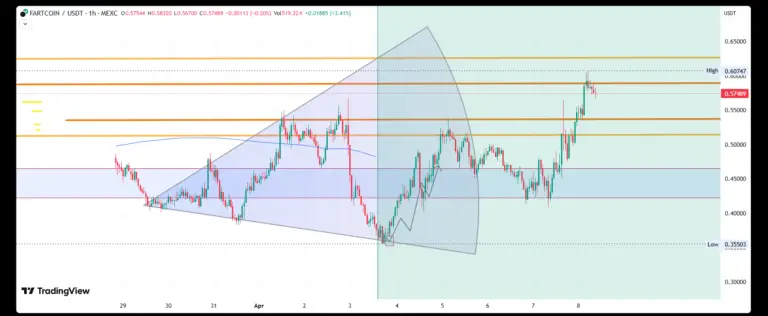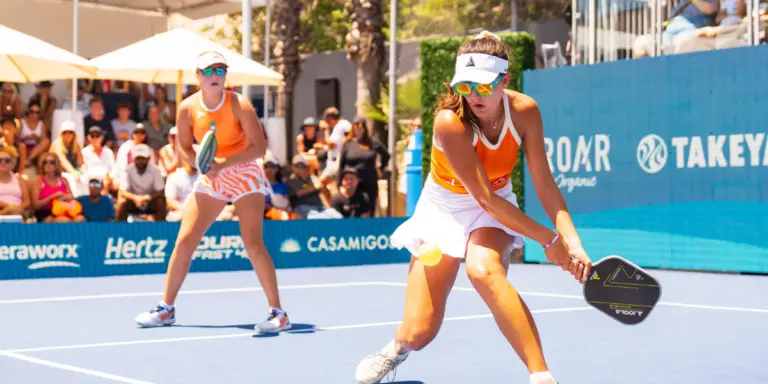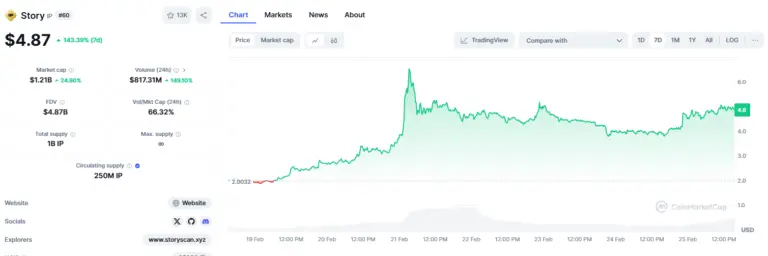In pickleball, versatility is essential for becoming an effective player. Two key techniques that often contrast with each other are the slice and topspin shots. Understanding these differences can significantly enhance your gameplay and help you outmaneuver your opponents. This article explores the distinctions between slice and topspin, how to execute each shot, and the strategic situations in which to use them for a competitive advantage.

The Importance of Spin in Pickleball
In pickleball, controlling a point can be achieved through five main factors: direction, power, height, depth, and, most importantly, spin. Mastering spin—both topspin and slice—is crucial for competitive play, especially as you aim to advance beyond the 4.0 level. Developing this skill will enable you to play more aggressively and employ a wider range of tactics, though it can often be challenging for many players.
What is Topspin?
Topspin refers to the forward rotation of the ball, achieved by striking it in an upward motion. Unlike other sports where you may hit the top of the ball, in racket sports, the focus is on lifting the ball over the net. This forward spin causes the ball to dip sharply—a phenomenon known as the Magnus Effect—and bounce higher, making it more difficult for your opponents to respond effectively.
How to Create Topspin
To generate topspin, you need to create friction between the paddle and the ball. This is accomplished by moving the paddle upward while making contact with the back of the ball, causing it to roll forward and produce spin. The faster your paddle moves in this upward motion, the more friction and spin you will generate. The typical swing motion for creating topspin resembles a “windshield wiper.” You can apply this technique across various shots, including serves, dinks, volleys, lobs, and groundstrokes.
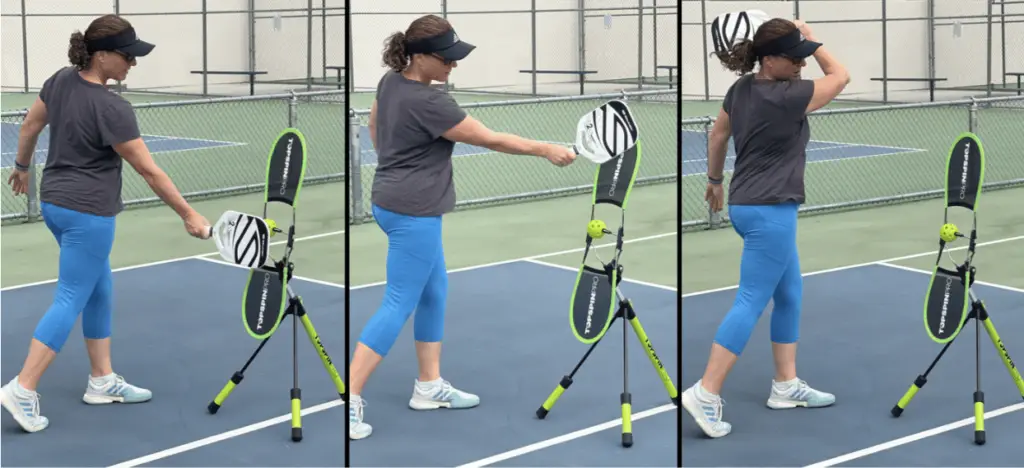
the windshield wiper shape is used to apply maximum topspin to the ball.
Topspin Technique
Grip: While you can apply topspin using a continental grip, it’s generally easier with an eastern or semi-western grip.
Swing Path: To generate topspin, swing from low to high, brushing your paddle up the back of the ball.
Follow-Through: Ensure your follow-through is high, extending either over your shoulder or with your arm lift.
The Benefits of Topspin
Consistency: Topspin allows for a higher net clearance, reducing the likelihood of hitting the ball into the net. This is especially beneficial for returns, lobs, and general groundstrokes in singles play, where there’s no opponent at the net to intercept higher shots.
Accuracy and Aggression: Thanks to the Magnus Effect, topspin creates an arc-shaped flight path, enabling you to:
- Serve with aggressive height, depth, and speed
- Dip the ball closer to your opponent’s feet
- Create wider angles from the sidelines
- Execute more aggressive lobs (higher and faster)
- Lift volleys with topspin that still drop in
Injury Prevention: Using topspin is biomechanically efficient, as it allows you to roll the ball back into the court rather than hitting it forcefully. This upward motion reduces impact strain on your body, helping to prevent overuse and shock injuries. Think of it like glancing your paddle up a wall versus swinging directly at it—the latter is much more jarring!
Slice
What is Slice?
A slice shot involves a downward paddle motion that imparts backspin on the ball. This backward rotation results in a slower, lower trajectory, causing the ball to skid upon bouncing and making it challenging for opponents to return aggressively.
How to Create Slice:
Slice is generated by swinging the paddle down on the back of the ball. The friction from this contact causes the ball to rotate backward. The faster your paddle moves downward, the more friction and spin you create.
Slice Technique
Grip: The continental grip is most effective for executing a slice.
Swing Path: Swing from high to low, making contact with the ball in front of your body.
Follow-Through: Finish with a downward motion, ending below the point of contact.
The Benefits of Slice
More Time: By adding slice to your shots, you slow the ball down, giving you extra time to move up the non-volley zone (NVZ) line, making it an ideal tactic for doubles. It also provides valuable time when you’re on the defensive in singles.
Lower Bounce: Slice keeps the ball low and causes it to skid when it bounces, making it difficult for opponents, especially taller players or those with limited reach, to execute effective shots.
Disrupts Rhythm: A well-executed slice can alter the pace of the game, disrupting your opponent’s timing and creating opportunities for unforced errors.
Improves Dinking: In net play, a slice keeps the ball low, making it tougher for opponents to attack aggressively. Mixing slice with topspin also keeps them guessing about your next shot.

When to Use Slice and Topspin
When to Use Topspin
Aggressive Baseline Play: Utilize topspin to push your opponents back and control the pace of the rally, especially in singles.
Drops: Employ topspin to effectively dip the ball at your opponent’s feet.
Drives: Topspin gives you better control over your pace, adding extra dip to your drives.
Lobs: Use topspin for high, deep lobs that push your opponent further back.
Dinks: The added control from topspin allows for more aggressive dinking.
Serves: Topspin helps you adjust the height and pace of your serves. Mixing in topspin keeps your opponent guessing.
Volleys: Topspin enables you to lift lower volleys using the roll technique and controls your more aggressive volleys into the court.
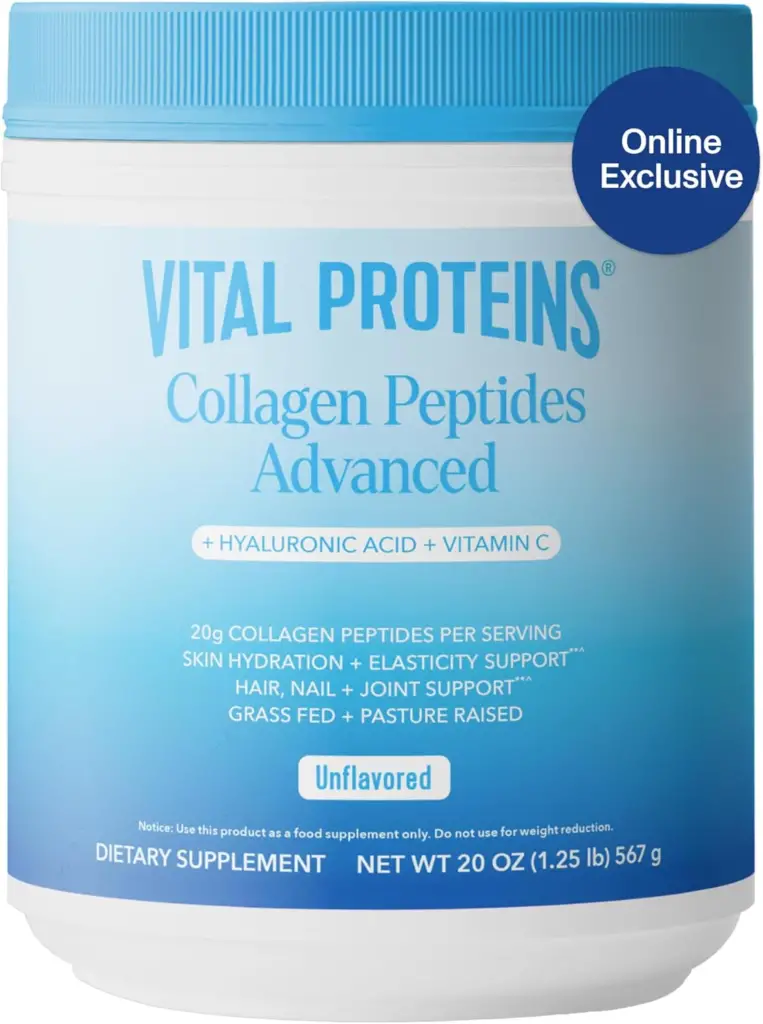
When to Use Slice
Defensive Play: Use slice when you need time to recover or reset the point.
Approach Shots: Slice keeps the ball low, forcing weak returns from your opponent in singles, while allowing you to chip it higher and deeper in doubles, giving you time to approach the non-volley zone (NVZ).
Dinking: In dink exchanges at the net, slice helps keep the ball low and challenging for your opponent to attack. Mixing slice with topspin during these exchanges can add variety to your game.
Change of Pace: Utilize slice to disrupt opponents who prefer fast rallies, slowing the game down to throw them off their rhythm.
Serves: Adding slice, especially with a little side spin, allows you to angle the ball out wide on your serve, making it harder for your opponent to return.
Drops: Like topspin, slice can enhance your drops, putting pressure on your opponent. A well-placed slice drop can pop the ball up, positioning you to attack.
